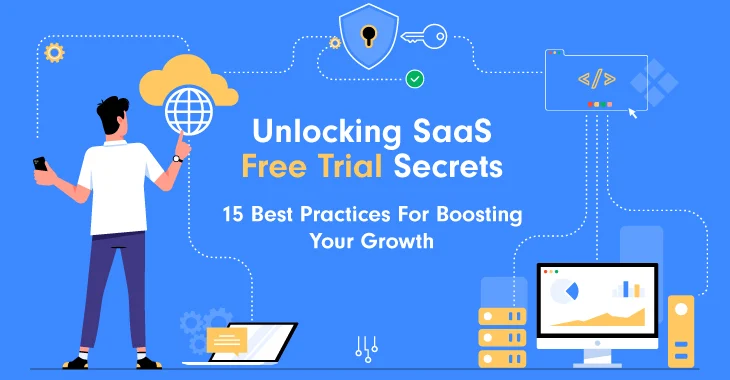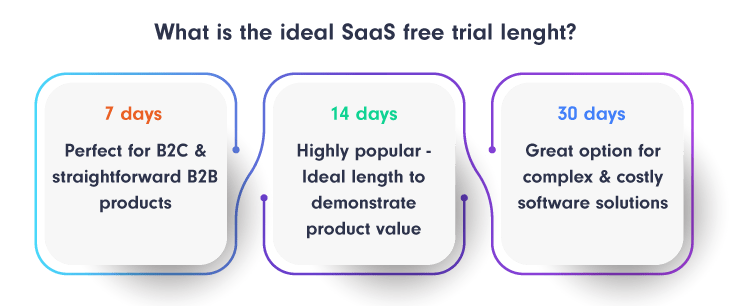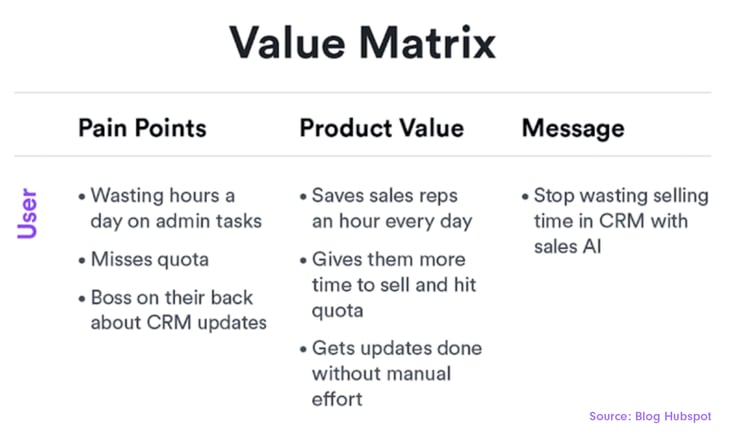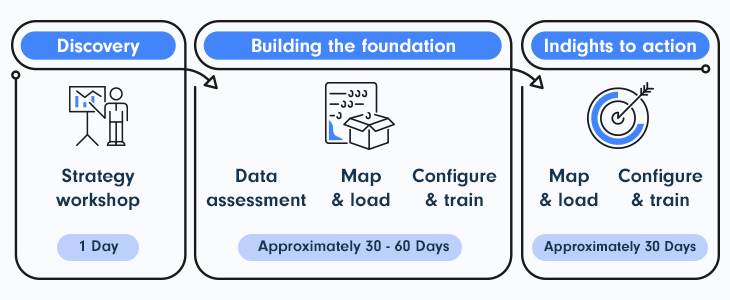Unlocking SaaS Free Trial Secrets: 15 Best Practices For Boosting Your Growth

The world of SaaS and software products is enormous, but there is one fact all businesses that are part of this grand industry need to remember: the success of their products and the very future of their companies depends on the number of paying customers. The more paying users you have, the better it will be for business. Unfortunately, you can’t expect customers to simply hand over their hard-earned cash without first getting a taste of your products.
So, how do you introduce your product to potential customers? Paid trials, freemiums, or free trials? Most SaaS entrepreneurs go for the last option, and with good reason.
Free trials are a perfectly valid way to showcase the value of your product, not to mention a risk-free method for customers to get a feel for what you are offering.
But before you get overly excited about free trials, it’s best to fully understand this pricing strategy. Adequately optimizing the free trial process and investing in a robust Merchant of Record solution that allows you to experiment can significantly reduce the risk of failure and keep those conversion rates growing. So, we'll be taking an extensive look at this topic by examining the following:
What is a SaaS Free Trial Strategy?
From the PLG perspective, the success of the product heavily (if not entirely) depends on the value it can deliver to its users. If, during the free testing period, the customer is convinced of the benefits, they will be more than happy to cover the cost of the subscription.
So, a SaaS free trial refers to a well-defined approach to offer a glimpse of the software they are selling and incentivize users to pay for access without giving away too much.
Generally speaking, a successful pricing strategy of this kind that sparks a huge number of free trial conversions includes the following:
A carefully set free trial period
Clear free trial expectations
Support throughout the entire free trial user journey
Dedicated customer success team
Analytics tools
Certain usage restrictions meant to encourage users to convert
Free Trial Types & Length
The effectiveness of your free trial program relies on its type and length and how these factors do justice to your product. It’s essential to understand them and make the right choice for your app.
Free Trial Versions
Paid Trials
While a less popular option than the traditional free version, the paid trials are exactly what you’d imagine. Prospective customers are required to provide their credit card details, and payment is made before the trial starts.
You might think that this is an insane practice that completely contradicts the entire idea behind product testing. Only it doesn’t.
A paid trial is alluring for SaaS companies because of the benefits it brings. Since converting users can be a challenging mission and can often lead to financial losses, paid product testing manages to differentiate between interested buyers and free riders.
SaaS funders can offset operational and development costs during the testing phase and have a better understanding of market demand. The more people sign up to test the product, the more certain you are that the product has a market value.
Plus, clients that are willing to pay to test your products are more invested in the entire process. They will either be convinced of the advantages your product brings and become your long-term users or provide you with insightful feedback that can help further improve your offer.
The Freemium Model
They might both contain the free hook, but free trials and freemiums are quite different from each other. While the free trial model offers unlimited access over a limited period, freemium gives target customers limited access over an unlimited period.
When adopting this strategy, users interact with your product, accessing specific features, and have the option to upgrade their plan to really get to know its true power.
What aligns this model with free trial structures is the importance of carefully crafting the package to capture attention.
Your freemium offers need to strike a balance between providing value in the free version while being strong enough to entice users to upgrade to the premium version for enhanced benefits and features.
It’s not an easy thing to do, but once you’ve nailed it, the freemium option can bring you a whopping number of new customers.
Reverse Trials
This approach is a combination between a free trial and a freemium. You are granting customers access to the premium features of your SaaS product and downgrading them when the trial period ends.
Reverse trials can be highly effective in terms of conversion rates because it gives your potential users the option to really experience your offer and get dependent on it.
And what’s even better about this model is that you don’t really lose your trial users if they decide not to move forward with the premium plan. If they downgrade and continue to use your freemium option, you are still given a chance to try converting them into paid customers later on.
This is not something you can do with free trial customers. Once they say no, they are gone for good.
The Optimal Trial Length
The success of your free trial depends on how strategic you are when crafting your offer. Boosting your free trial conversion rate heavily depends on how well you manage to showcase the value of your product.
Besides offering enticing features, you need to allow potential leads enough time to understand what your offering is and get hooked on it.
Free trials increase sales, but they can also build up your costs. So, you might be tempted to think that the shorter your free trial length is, the better. And you wouldn’t be wrong, in theory.
And there is a but here. SaaS products come in different forms, shapes, and complexity levels. And because of this, applying the shortest trial duration, which is 7 to 14 days, might not be enough to allow users to discover the product and convince them to complete the sign-up process.
The middle option of 14-30 days is almost vacation length, giving trial users enough time to try all your features and fall in love with your product. It’s the ideal timeframe for more complex products.
The extended trial period, 30+ days, is for hardcore SaaS tools, those that offer a labyrinth of features, where even the employee onboarding process takes forever. Probably in this situation, the best option would be to offer a freemium or a paid trial, given the extensive operational costs.
Deciding on the optimal trial length depends greatly on the complexity of your SaaS products. Yes, the faster you convince users to sign up, the better, but showing value is what matters, so be sure you offer sufficient time and evidence for this.
Also, always incorporate top-notch customer support and gather as much feedback as possible. If you aren’t going to gain a new user, at least get their opinion.
Conversion Benchmarks for SaaS Free Trials
How do you determine if free trial campaigns are successful? Simple, by considering benchmarks. So, let’s look at some numbers.
The conversion rate for opt-in free trials, meaning the users are not required to give their payment information, is:
From an organic traffic source: 18.2%
From a paid traffic source: 17.4%
The conversion rate for opt-out free trials, meaning the user will provide credit card details, is:
From an organic traffic source: 48%
From a paid traffic source: 51%
*It’s relevant to mention that in this situation since the free trial users already gave their payment details, their decision to pay for your service is often passive. That’s why the conversion rate is higher in opt-out free trials.
** Also, a user is considered to have converted when a month’s paid subscription is accepted. But the goal here is customer acquisition, so you need to analyze the success of your free trial campaign by looking at both retention and churn rates.
15 Free Trial Best Practices
If you are on a quest to boost those free trial conversion rates, then give these 15 SaaS free trial best practices a real try.
BEFORE TRIAL
1. Narrow Down Your Target Audience
If you are looking to convert more users, then you need to be certain that you are offering free trials to the right crowd. Finding your niche will help you in more ways than one. It will increase your customer acquisition rate, help you better structure free trials, and improve your support.
Now, to adequately identify your target audience, you might want to launch different trial versions based on your user demographics. Also, consider creating buyer personas, identifying pain points, and solving challenges through product features. You can further optimize your campaigns by using customer behavior insights and make sure to test them until you reach the perfect result.
2. Experiment With Trial Length
Don’t take anything anyone says for granted. When it comes to the free trial optimal length, the key is keeping an open mind and testing. What does your trial offer? How complex is your product? Who is your target audience, and how busy are they? Add different elements to your thought process, and don’t make up your mind simply by looking at your product. Your audience could influence the length of the trial.
To find that sweet spot, the key is to track user behavior, properly identify activation points and the actions necessary to reach them. Once you have those, calculate how much time users need to complete the trial. Based on our findings, you can then decide on the length.

3. Simplicity in Sign-ups
What’s the first goal of free trial offers? To obtain more trial users, right? SaaS founders tend to obsess over data. It’s in their nature. The mistake they make is they flood the sign-up form with all sorts of questions, adding friction to the process and ultimately making it extremely difficult to obtain trial signups.
If you’re looking to ultimately gain more paying customers, keep the sign-up process simple. Make it easy for them to first access their free accounts and give them a real chance of falling in love with your product. Data is important, but not worth nipping your conversions in the bud.
4. Social Proof The Difference
There is nothing people like seeing more than testimonials. This gives them confidence that others have been where they are now and managed to figure a way out. You need to connect this notion to your app, and the best way to do that is by adding social proof to your sign-up page.
So, be sure to add positive reviews and testimonials received from customers, highlighting the benefits of the app and the simplicity of the signup process. You’d be surprised how much social proof helps in gaining the customers’ trust.
5. Be Clear About Your Product’s Value
Making your app’s value as clear as daylight is key to promoting your product trials. First of all, it draws in the right audience, and that is a huge gain in itself. The most effective way to accomplish this goal is to make use of smart copy tailored to adequately send the right messaging to different personas.
When considering paid traffic sources that are dedicated to bringing you potential users, then you should think about creating several different approaches.

DURING TRIAL
6. Hold Up on That Email Confirmation
Yes, security matters and we all know that well! But here’s a thought. With opt in free trials, you aren’t risking all that much. The email confirmation helps you see if users are real, and it’s obvious this is a necessary part of your process.
But what we’re suggesting is to delay it a bit. Email confirmation creates friction, and since your relationship with trial users is just starting, you don’t want to nag them too much. So, instead of insisting on the email confirmation step, give them a bit of space to start testing your product, and then use a banner to give them a gentle nudge to confirm the details.
7. The Onboarding Process Matters
No one knows your product better than you. No one understands its value better than you. So, if you want to make sure your potential customers see it too, you have to give them a helping hand. A successful free trial campaign will always be accompanied by a comprehensive onboarding process focused on small wins.

The complexity of your onboarding process will depend on the complexity of your SaaS product and the free trial offer presented to the user. Don’t get carried away here. The idea is to offer your potential customer sufficient information to guide them so they get the most out of the product trial.
8. Personalize The Trial Experience
This is news to no one by now. We live in the era of personalization, and the more dedicated you are to creating unique experiences, the greater your chances of winning. Of course, this rule also applies to free trial offers and their onboarding processes.
The best way to achieve this goal is by getting really serious about your targeted demographics, understanding the challenges, and creating different trial versions based on their JTBDs (jobs to de done). When creating the sign-up flow, help the user to identify the right version for their needs without complicating the process. Keep it simple, but at the same time, be sure you can provide them with customized experiences.
9. Email Marketing for Inactive Users
You might need to hear this. Not all users will subscribe to your product. It’s a fact. Some might not interact with it at all during the trial. But It’s not a tragedy yet. There are still ways to salvage this situation.
Inactive users aren’t automatically lost users. You can still reach them if you take the time to create a relevant email marketing flow based on the data you’ve managed to gather. Consider emails highlighting product benefits related to features that you’ve noticed they have not engaged with. Use information and user behavior data to guide you in the right messaging direction.
10. Demonstrate Value As Soon As Possible
Time is of the essence in campaigns of this nature. You don’t want to keep your potential customers waiting, especially since their patience is thin. So, our advice to you is to showcase the value of your product as soon as possible. You want that conversion rate going high sooner rather than later.
If you can allow the user to experience the product value on their own, great! If not, you can always make use of demos. These are great ways to demonstrate exactly what your product can do and illustrate its features.
11. Provide Top-Notch Support and Assistance
Your customer success team is your knight in shining armor in streamlining the trial process. Users can get stuck during product testing or get tired of it. They might even be on the verge of quitting the trial altogether. That's when you need to send it to your customer support ninjas.
If you notice that they are stuck, provide them with assistance. If they request your help, be quick to respond. Don’t let these opportunities pass you by. Everything you do during the trial period, how your system operates, and how your team responds is a reflection of the level of service users will receive once they’ve subscribed. Make a strong case for yourself and show how professional and dedicated you are.
12. Use Gamification To Increase Interest
Everyone loves a good challenge, and a free trial is the perfect time to offer potential leads just that. Using gamification, you are keeping those involved hooked. For example, progress bars and rewards, are easily incorporable features that can turn your regular trial into a fun and engaging experience.
Reward emails are highly appreciated, as they acknowledge the user’s progress and work. Needless to say, messages will be even more effective if they are personalized accordingly.
AFTER TRIAL
13. Offer Incentives To Upgrade
Nothing like a good deal to get you to say yes, right? Incentives, especially time-sensitive offers, are a great way to get your user’s attention and help them make up their mind fast about joining your client network.
Whether it’s a subscription discount or access to extra features at no cost, the point is that a discount will most certainly encourage users to turn into paying subscribers sooner.
14. Tell Users What They Are Missing Out On
It’s important that you have some control over what is happening with your trial sessions. Yes, customers have the final say, but that doesn’t mean you should leave it completely up to them.
Work on it. Send targeted emails or in-app messages that describe what advantages they will miss out on if they decide not to subscribe to your service. If you are using the freemium model, highlight the features they will no longer have access to if they decide not to upgrade.
15. Test, Collect, And Implement Changes
Remember how we said that you shouldn’t obsess over data? Well, you shouldn’t, but you don’t want to be indifferent to it either. Find a balance between the two and make sure to use insights correctly.
Collect feedback as much as you can without adding friction to any of the flows, and use it to further fine-tune your future campaigns. Sometimes the most valuable information comes from users that have turned down your offer. Understand what made them say no and work to improve it.
Unlock unprecedented growth with our Merchant of Record model. From simplified tax and compliance management to global payments and automated billing, PayPro Global takes care of everything for you.
Focus on your product. We’ll handle the rest.
How Can PayPro Global Help?
PayPro Global is a unified eCommerce solution for software, SaaS, and digital goods developers. Offering access to much-needed tools to successfully sell products and services worldwide, we are the trusted partner you are seeking.
Tap into a growth infrastructure packed with complete subscription management, global tax and compliance handling, comprehensive fraud detection and prevention systems, as well as top-notch customer 24/7/365 customer service. With extensive reporting tools and the capacity to sustain all pricing models, including trials, cross-sell, upsells, and add-ons, PayPro Global has all the tools you could possibly need to turn your SaaS product into a phenomenon.
Enjoy our all-in-one solution that is ready to help your business while also taking away the operational and financial burden. Get in touch with us to investigate our strengths and how they may fit your needs in obtaining a unified eCommerce payment solution.
Final Thoughts
Free trials are a great way to gain new paying subscribers. But they can be expensive for your SaaS business, which is why it would be wise to determine the optimal campaigns for your product, sure to give the best possible results.
So, take your time to understand the types of trials available, as well as their lengths. Decide which option fits your product best, mind your audience and fine-tune it as best you can. It might take some time, but it will be worth your while. Of this, you can be sure.
Put together targeted onboarding processes, reward customers for their dedication and determination, and offer an incentive that speeds up their decision to upgrade. In other words, do whatever you can to ensure the success of your free trial.
And when it’s all over, see what you can learn from your experiment and implement the changes you find necessary in all of your future development.
Free trials often pass as a run-the-mill kind of task. They are anything but that, and it’s high time we gave this subscriber-winning tool the recognition it deserves.
Ioana Grigorescu
Ioana Grigorescu is PayPro Global's Content Manager, focused on creating strategic writing pieces for SaaS, B2B, and technology companies. With a background that combines Languages and Translation Studies with Political Sciences, she's skilled in analyzing, creating, and communicating impactful content. She excels at developing content strategies, producing diverse marketing materials, and ensuring content effectiveness. Beyond her work, she enjoys exploring design with Figma.
-
1.Explore PayPro Global's Solutions: See how our platform can help you streamline your payment processing and boost revenue.
-
2.Get a Free Consultation: Discuss your specific needs with our experts and discover how we can tailor a solution for you.
-
3.Download our Free Resources: Access valuable guides, checklists, and templates to optimize your online sales.
-
4.Become a Partner: Expand your business by offering PayPro Global's solutions to your clients.
Get the latest news



